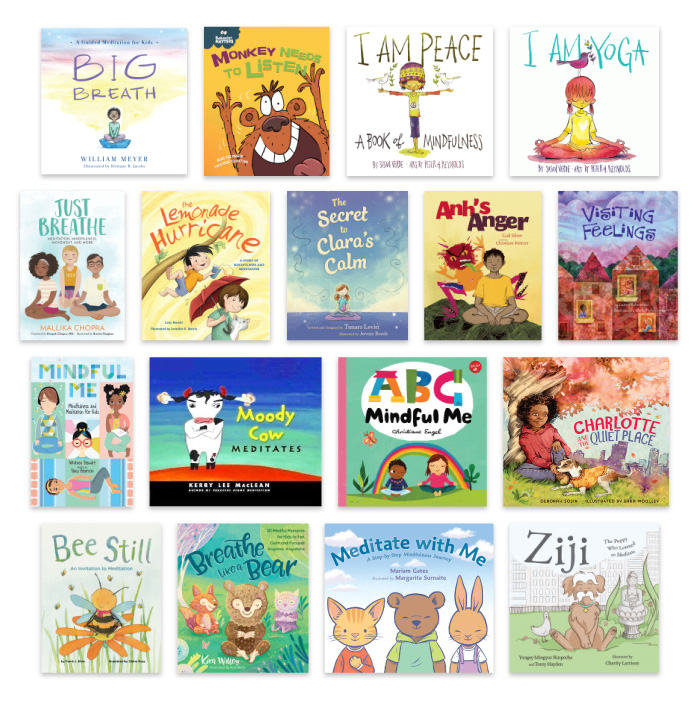There has been a growing interest in meditation within the educational setting. Perhaps this is because of the growing awareness of scientific studies which have demonstrated the benefits of meditation along with the growing number of states that are adopting Social and Emotional Learning (SEL) standards. There is also a growing understanding of the whole-child approach. The most important predictors of success in college and career is not knowing the facts; rather, it’s having the skills necessary to navigate through stressors and challenges like self-awareness, self-management, social-awareness, relational skills, and responsible decision making (Cranston 2020).
When I think back to my reasons for becoming an educator, it ties into these 5 competencies. The drive wasn’t to raise the best test takers or even the most brilliant minds. My goal was to educate students in a way that would allow them to grow up to be happy and do good things in the world. I did some research and spoke with one educator, Ann Viveros, who has extensive experience with meditation and teaching meditation to educators. With all of this in mind, I’ve developed 4 key points to consider if you’re interested in using meditation in the educational setting:
1 Start with yourself, the teacher. Teaching is a stressful career. According to one study, 93% of teachers report “high levels of job-related stress” (Cranston 2020). As an educator, self-care is important, and meditation can be a beneficial form of self-care. Scientific studies have shown that a regular meditation practice can help you be less reactive to stressors, be more compassionate, have better relationships, and have reduced psychological bias (Smith, Suttie, Jazaieri, Newman 2017). As teachers, we need to think about the environment that we’re setting for our students. When we can be more mindful, we can live more joyfully and be more intentional in our interactions with students.
Educator and long-time meditator, Ann Viveros, pointed out that while learning the practice of meditation might take several weeks, it takes several months to embody it. It takes practice and with practice over time you’ll see a change, so be sure to give yourself time to practice and experience the benefits of meditation before bringing it to the classroom. She believes that it’s more important to offer teachers, rather than students, the option to learn and practice meditation. This is because meditation can allow teachers to be better listeners, to avoid burn-out, and ultimately, to live healthier lives. If districts are interested in starting a program for teachers, try to avoid a 1-time professional development. Rather, if teachers are going to truly learn meditation and experience it, they need multiple experiences over time (Viveros).
In addition, Ann shared that mindfulness and meditation are not an end all and pointed out that it opens up an opportunity for teachers to engage in equity and social justice: “It’s not enough to just feel better and feel less stressed. How can we use it as a tool for engaging more fully and deeply in equity and social justice work? Can we learn to use it as a tool for self-improvement, social awareness and systemic change?”
2 If sharing this practice with students, be mindful and respectful of your students’ cultures and experiences. In my conversation with Ann, she also pointed out the importance of being aware of your audience. This means not forcing students to close their eyes, not forcing students to share, and not forcing students to engage since there are many ways individuals might achieve mindfulness. It also means being inclusive when providing guided meditation by avoiding “he or she” pronouns and instead using “they, them, and their.” (For more information on pronouns, visit www.mypronouns.org.) It’s important to honor that the practice of meditation is an ancient tradition for many world cultures, so don’t assume that your students don’t already have another form of practice at home.
3 Bring your best intentions. A whole-child approach to education realizes that students need more than just the mastery of curriculum. They need the skills to navigate life and challenges. More important than curriculum, we want our students to live happy lives. Providing students with a mindful moment each day can allow them time for self-care, time to reflect and notice their thoughts and feelings. Ann shared that meditation should not be used to control students to get them to behave. It’s very important to check in with your reasons for introducing meditation in the classroom because the goal should never be an easy fix to get students to behave.
4 Incorporate books. There is a famous saying: “You need to name it to tame it.” When practicing meditation with students, they need to learn about the practice and why they might want to engage. They also need to learn words to describe emotions they’re feeling and learn about both strategic and nonstrategic ways people might react to challenges. Books provide the perfect opportunity for students to learn words for their emotions and actions through characters. This way, they can notice these experiences during their meditation practices and during their daily lives. There are many books that teachers can use for read-alouds, mentor texts, small group books, or whole class reads. Below are just a few.

We know as educators we are concerned with so much more than test scores and academics. For yourself and for your students, there are many ways we can develop important SEL skills and our own mindfulness. That can include meditation, yoga, reading, writing, walking or running, other forms of exercise and sports, drawing, gardening, and more. However, if you’re interested in meditation for yourself or students, it’s important to do so with intentional care and wisdom.
To learn more about Ann, visit her website at www.annviveros.com.
References
Cranston, A. (2020). Creating social and emotional learning environments. Huntington Beach, CA: Shell Education.
Smith, J.A., Suttie, J., Jazaikeri, H., Newman, K.M. (2017). The state of mindfulness science. Retrieved from https://greatergood.berkeley.edu/article/item/the_state_of_mindfulness_science.
Viveros, Ann. Personal Interview. 2019.
What is SEL? (n.d.). Retrieved from https://casel.org/what-is-sel/.






